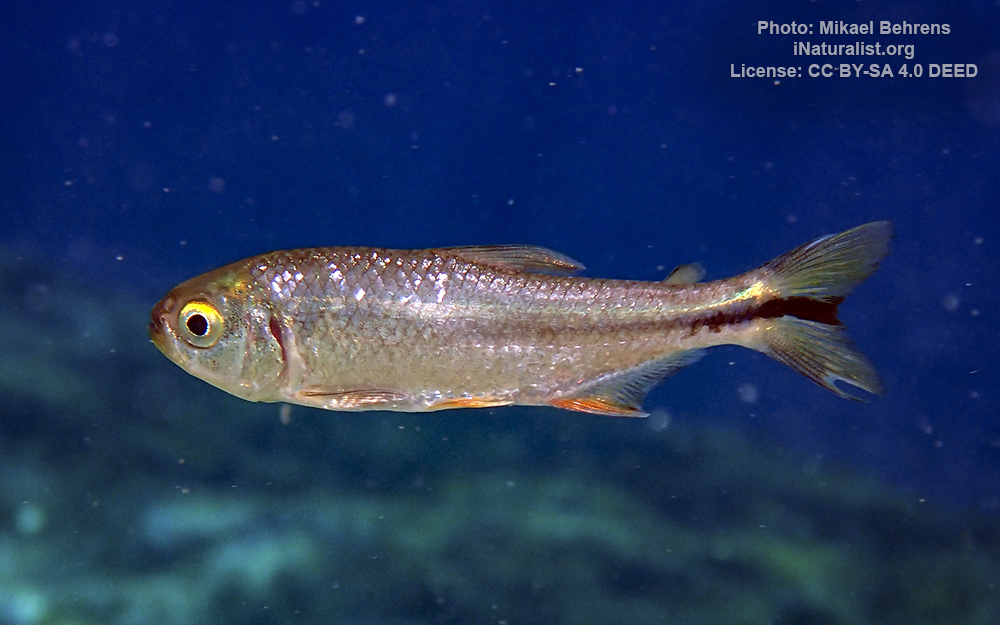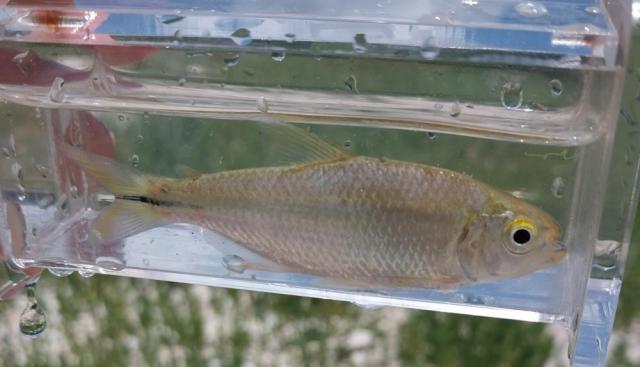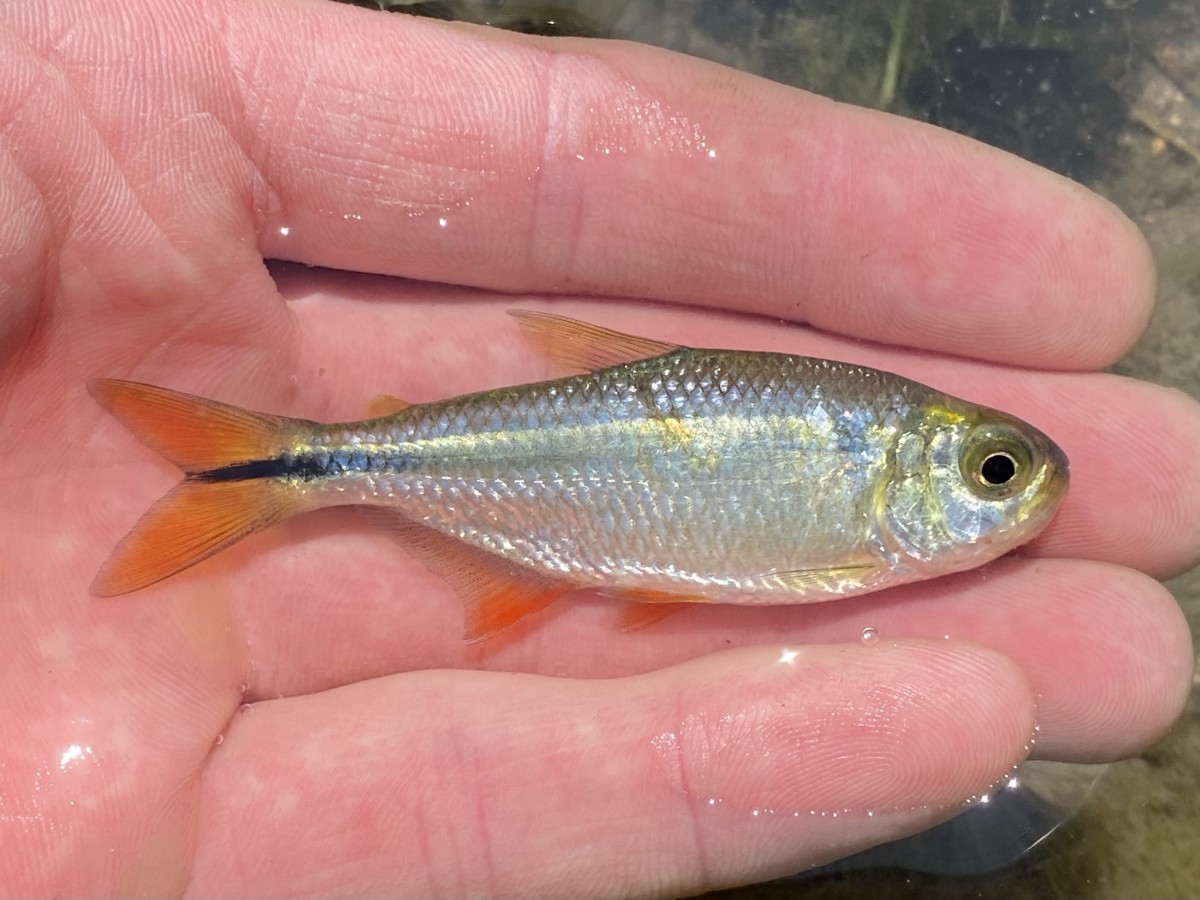Texan tetra
(Astyanax argentatus)

Image source: Mikael Behrens | inaturalist.org
Classification
General data
Astyanax argentatus is a small freshwater fish native to northern Central America and southern North America. Given its native range, it is also known as the Texan tetra. Little has been published regarding the feeding habits or behavior of A. argentatus, but it is known to have the northernmost distribution of any member of the genus Astyanax.
There is debate regarding its status as a species, as it was considered a synonym of the Mexican tetra (A. mexicanus) for 20 years, but it has recently come back into favor as its own distinct entity. Various morphological specifics indicate their separation, though some resources still consider them synonymous. It also has visual similarities to various other members of the genus; its silver scales, single humeral spot, and yellowish or reddish fins are not uncommon features therein.
Astyanax argentatus reaches a maximum length of 11.4 cm (4.5 in) standard length (SL).
The body is slender, at a mean of 34% SL, and there are between 19 and 23 anal-fin rays, most often 20. There are 10 soft rays in the dorsal fin, and 11–13 rays in each pectoral fin. The head is short, from 23–26% SL, and the eye is large, taking up around a quarter of the head (16–34% of the head\\\'s length, with a mean of 28%). There are 32–37 scales in the lateral line, usually 33. The caudal and anal fins are notably long.
The back is darker than the rest of the body, the sides are silver, and the belly is tinted slightly red. Most fins are a faint orange or red-yellow color, and there is a black spot on the caudal peduncle that continues onto the central caudal rays. The anal fin is unpigmented. There is a single humeral spot that demonstrates variation; it can be rectangular, triangular, or indistinct.
Though A. argentatus is visually similar to congener A. mexicanus (the Mexican tetra) in many ways, there are various morphometric differences between the two. These include fewer anal-fin rays in A. argentatus (21–25, modally 23 in A. mexicanus), a more slender body (37% SL in A. mexicanus), and a longer anal fin (14% SL or longer, mean 16% in A. argentatus, vs. 15% SL or shorter, mean 13% in A. mexicanus).
On the anal-fin rays of mature males, there are small fleshy protrusions or spines sometimes referred to as nuptial tubercles. In other species of the genus, these are present in different ways; for instance, on Astyanax acatlanensis, some of these tubercles are bifid (vs. all simple in A. argentatus), and they are only present on the pelvic fin of Astyanax rioverde.
The type locality of A. argentatus was reported as the upper tributaries of the Nueces River, in the U.S. state of Texas. Further specimens have been collected from Aramberri, a municipality in the Mexican state of Nuevo León. It remains the northernmost species within the genus Astyanax. It has been described as a Nearctic representative of a Neotropical clade.
The Nueces River is in a region of low rainfall, but it is fed by various springs and aquifers, which means that it is largely composed of clear and cool water. The riparian vegetation of the region is healthy; little is known about the feeding habits of A. argentatus, but other members of Astyanax near robust riparian zones feed on the resulting plentiful allochthonous material, and are otherwise flexible omnivores.













